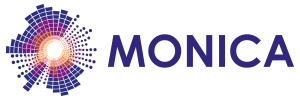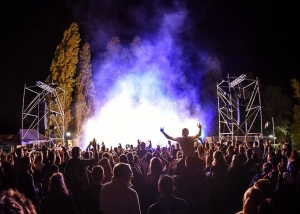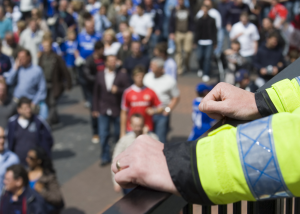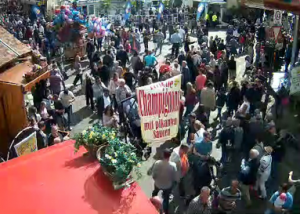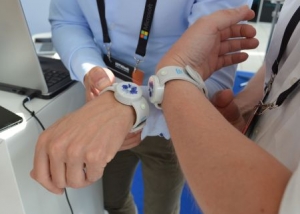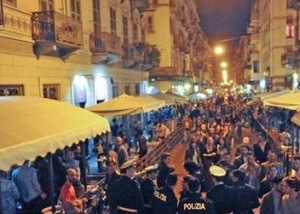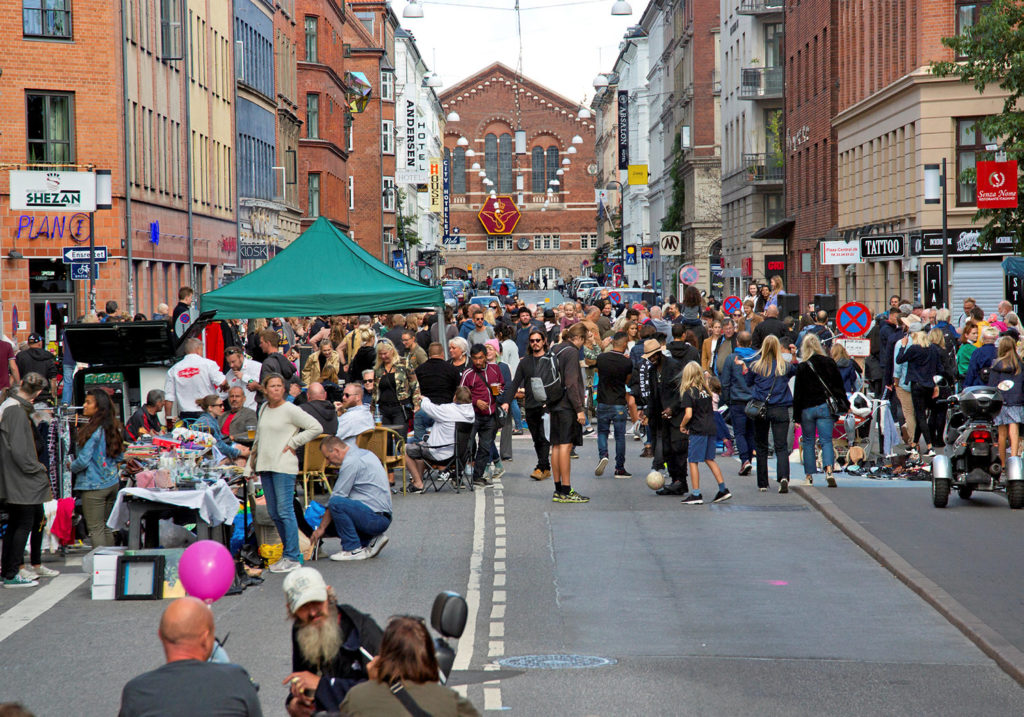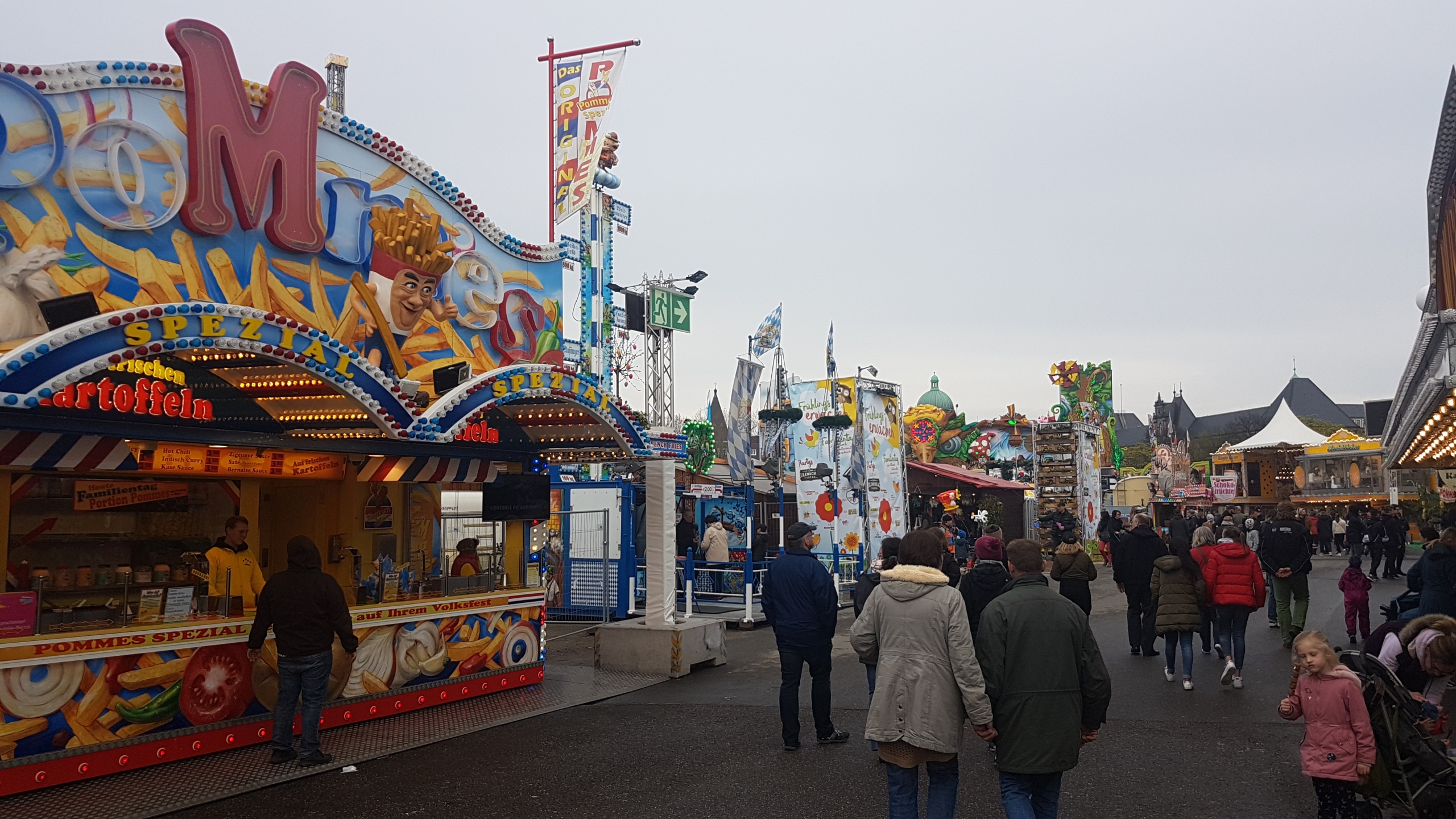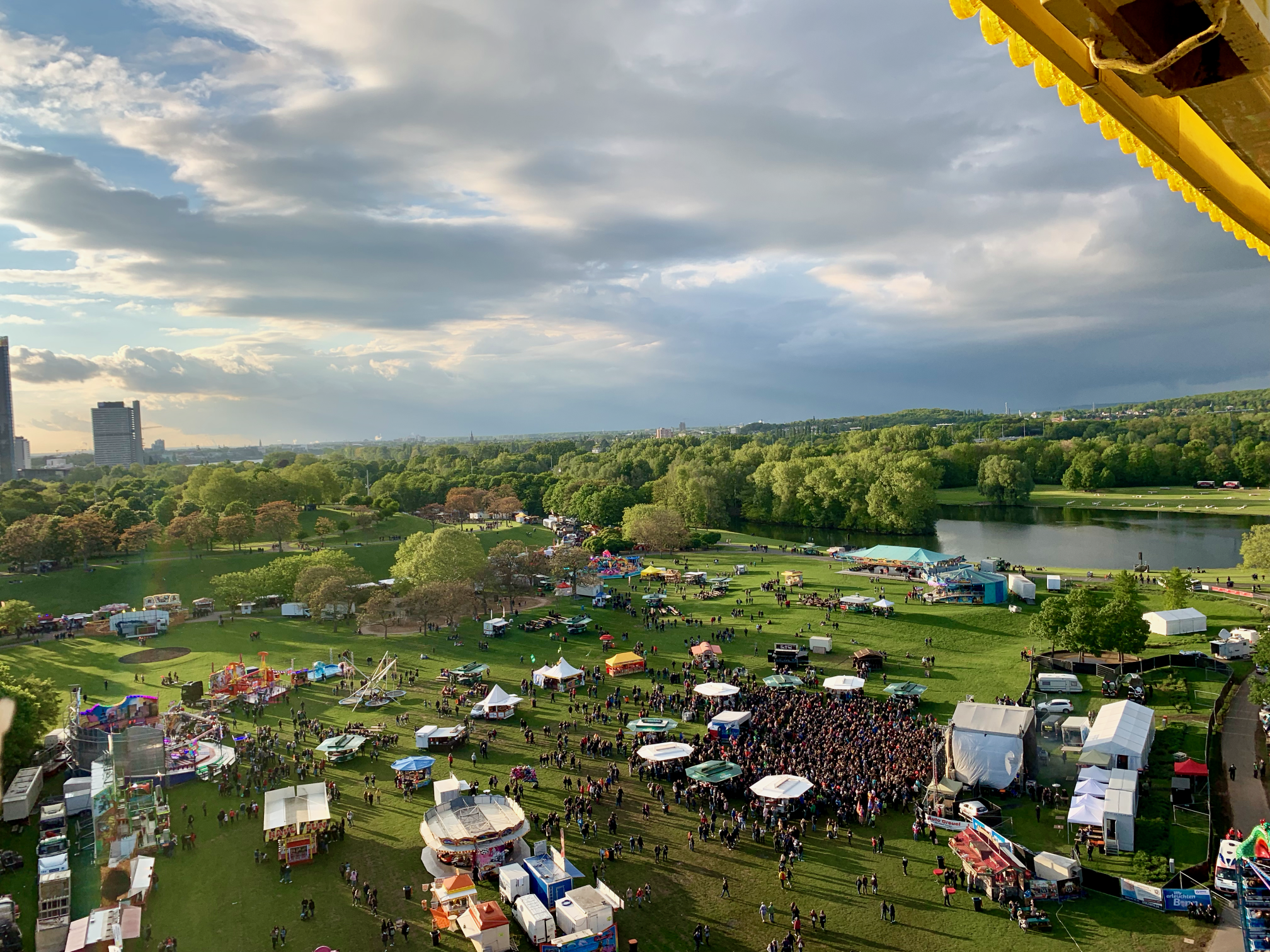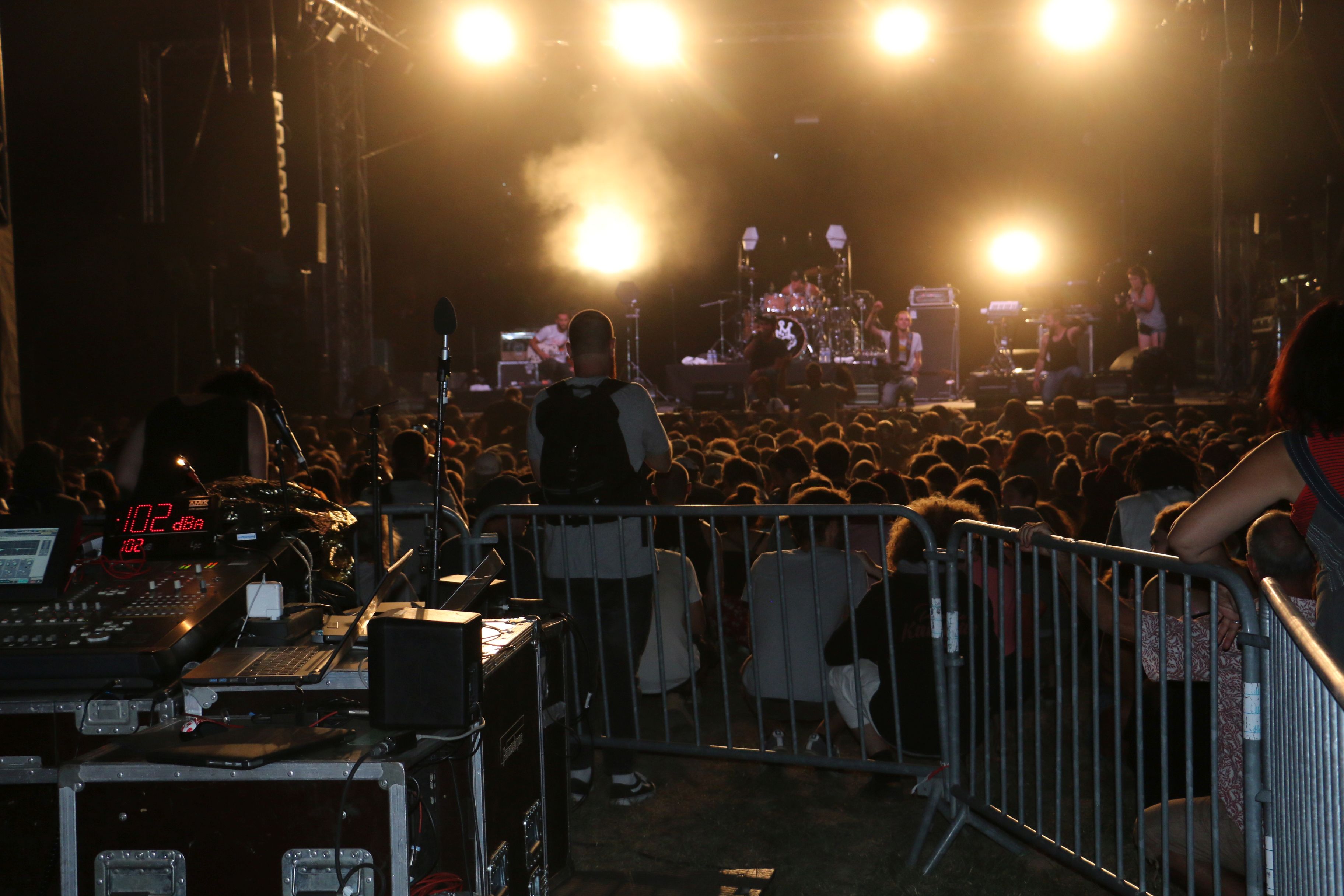Architecture and Components
The MONICA IoT Platform features a cloud based, comprehensive and advanced, open IoT platform where networking technologies and cloud services dynamically integrate fixed and nomadic devices and mobile wearables in the physical world with automated closed-loop actuating functions. The platform also integrates humans in the loop, where appropriate, by providing situational awareness and dynamic decision support tools.
A strong toolbox for security and trust management complements the platform.

The MONICA IoT Platform is built on several IoT physical world network infrastructures and a closed loop control system for each application. The components are connected via dedicated communication network and data repositories. The platform is able to support multiple IoT applications in a wide usage context focusing on the two most important challenges for organisers of large-scale concerts and cultural events in large cities: Unwanted noise in the surroundings and security of the audience.
Overview
| Application areas | Type of locations | Main features |
|---|---|---|
|
|
|
Challenges, Features and Benefits
MONICA addressed two very different challenges: The preservation and promotion of European culture and how to make IoT networks sufficiently developed to handle really large-scale deployment.
A pinnacle in the European way of life and our whole society is precisely the love for culture; developed and refined over many centuries; effectively diffused to the most remote part of our continent; appreciated by all age groups; recognised in one form or the other by all citizens of Europe. The “European Culture” takes many forms and is expressed in millions of ways. MONICA focused on one of the key aspects of European Culture: The cultural performances in open-air settings, with special focus on musical expression. However, this arch-European cultural element is coming under pressure for the reason of safety or because of rising property costs in inner cities has made the neighbours less positive towards noise and congestion from open air concerts. On this background, the MONICA project has delivered a large-scale IoT platform with applications that fully supports all Smart Living themes and supports the preservation and promotion of European culture.
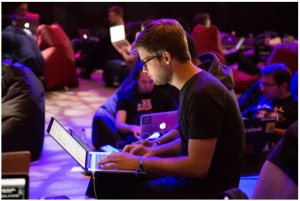 The Internet of Things is revolutionising the industrial ecosystems and the way industrial products and services are created and delivered and huge IoT sensor networks are deployed to manage and automate manufacturing plants and logistic processes. The Internet of Things is also increasingly being deployed to solve major societal challenges. However, most of the IoT and Smart City platforms are still insufficiently developed to handle really large-scale deployment. In response to this challenge, the MONICA platform is a resilient IoT platform is uniquely innovative since it demonstrates a large uptake of a multitude of IoT applications using low-costs wearables and apps with closed feedback loops to actuating networks and human interaction and intervention based on situational awareness and decision support.
The Internet of Things is revolutionising the industrial ecosystems and the way industrial products and services are created and delivered and huge IoT sensor networks are deployed to manage and automate manufacturing plants and logistic processes. The Internet of Things is also increasingly being deployed to solve major societal challenges. However, most of the IoT and Smart City platforms are still insufficiently developed to handle really large-scale deployment. In response to this challenge, the MONICA platform is a resilient IoT platform is uniquely innovative since it demonstrates a large uptake of a multitude of IoT applications using low-costs wearables and apps with closed feedback loops to actuating networks and human interaction and intervention based on situational awareness and decision support.
The MONICA IoT platform consists of 6 different solutions; each of them providing different technical features:
The MONICA Sound Level Monitoring solution provides real-time monitoring of sound levels with accredited sound level meters enabled for use in IoT applications and also perform real-time sound analysis:
- Measures and stores historical sound level parameters measured within a specified time interval in steps of one second.
- Makes analysis of sound streams from outdoor events and estimates the contributions from concerts, audience, traffic, etc.
- Enables the computation of a sound density distribution (heat map) across a pre-defined area.
- Provides an interface to an Open Data environment or a standard Content Management System so that sound and noise data can be made available to the public.
The MONICA Adaptative Sound Field Control solution is an active sound control system that can optimised sound field in the audience area while reducing the sound levels in neighbouring areas with up to 10dB:
- Deploys additional loudspeakers pointing towards the area where noise reduction is needed thereby creating the impact of sound level reductions.
- Uses accurate, adaptive sound propagation models for the venue based on measurements of sound levels, wind speeds and weather data, to control the secondary sources (loudspeakers).
The MONICA Crowd and Capacity Monitoring solution facilitates the collection of important information about crowd size, flow, object detection as well as early warning of security and safety threats :
- Interfaces to of a wide variety of sensors and components which can be deployed for different purposes related to crowd behaviour, security and safety of visitors.
- Connects to CCTV cameras and advanced video analytics such as people counting, crowd density estimation, human and object detection, crowd flow.
- Connects to wearables (wristbands, smart glasses, GPS trackers) and IoT sensors (wind speed, noise and other environmental parameters)
The MONICA Crowd Management and Communication solution is a cloud-based, closed-loop management solution that provides a real-time operational picture with decision support and means for communication among staff members:
- Contains the Common Operational Picture (COP) as the main interface for providing human professional operators knowledge of the event performance.
- Contains the Decision Support System (DSS) that provides recommendations and proposes actions for the human operator intervention
- Facilitates real-time visual, audio and written communication between staff on-site and the control centre. Devices applied cover smart glasses, IoT staff wristbands and staff tracker.
The MONICA Collective Awareness Platform that displays noise related data and information for the citizens and facilitates co-creation of solutions:
- It can be integrated with any Content Management System such as WordPress, SiteCore, Joomla etc.
- It can also be integrated with Participatory Budgeting platform such as Consul
The MONICA Visitor Experience Apps consist of digital applications for greater enjoyment and quality of participating in events:
- Event apps can be customised to provide event-related information and can be integrated with the IoT wristband for location service and friend connect features.
- Can leverage on the wireless communication system that connects the wristband to create heat maps of crowd densities
The MONICA IoT Platform features a number of benefits for developers and system integrators, who wishes to develop an IoT network for advanced IoT solutions, e.g. for smart cities. The specific benefits are:
- A layered architecture with a substantial number of subsystems performing tasks.
- A high-level IoT network infrastructure which provides privacy and security for the information shared between the IoT devices, sensors and other IoT devices communicating with the network infrastructure.
- A middleware platform (the IoT Layer) simplifies the integration of a huge number of heterogeneous IoT devices and wearables considered in MONICA.
- A SCRAL (Smart City Resource Adaption Layer) exposes interfaces for data coming from multiple gateways. Applications
- The LinkSmart middleware modules subscribe to data for further processing. LinkSmart provides IoT data storage, event forwarding, and directory services for locating the available IoT devices and IoT services.
- A semantic framework comprising conceptual data models focused on the semantic virtualization of both IoT resources and services employed in the project.
- An IoT-Resources-Ontology (IRO) where IoT Platform services, wearables & sensors etc. are exposed in semantic representation of functions, properties and categories. A Semantic Sensor Network Ontology (SSN developed by W3C group) is chosen for the IRO development because of its strong focus on addressing the issues of interoperability at sensor level within smart city contexts.
- A Cyber Security and Privacy Framework, enabling trust-based communication, policy management and technical support across all levels of the platform.
- Availability of the MONICA Development Tool Box with Open Source components and Docker images of various representative solutions from the MONICA project.
Technologies
Conceptual Overview
The MONICA platform is a cloud based, advanced, open IoT platform with automated closed-loop actuating functions. The platform dynamically integrates devices and mobile wearables in the physical world with automated closed-loop feedback functions. The platform also integrates humans in the loop by providing situational awareness and dynamic decision support tools. The platform supports multiple IoT applications in a wide usage context focusing on the two most important challenges for organisers of large-scale events in cities and urban: Unwanted noise in the surroundings and security of the audience.
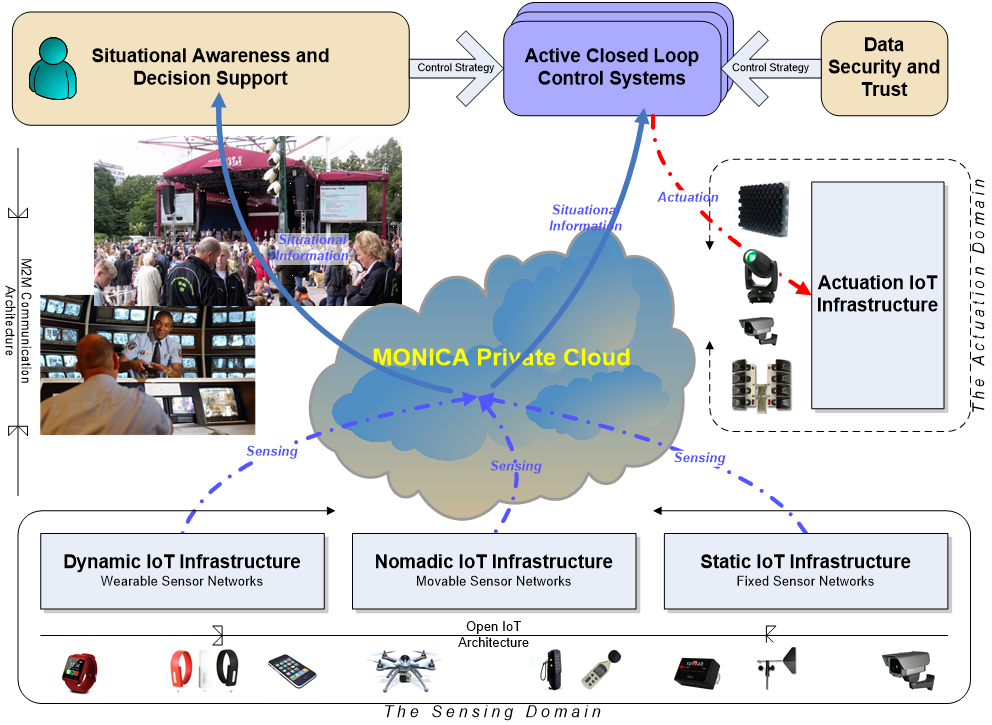
The MONICA platform
The MONICA platform is built on several IoT physical world network infrastructures and a closed loop control system for each application. The components are connected via dedicated communication network and data repositories. Some solutions cover with data capture from the physical world with analysis and transmission of information to the MONICA private cloud service. Other solutions deal with providing situational awareness from the information, decision support and feedback/actuation back to the physical world.
Functional View Architecture
The functional view gives an overview of the architecture and its main components, including main functionalities, interfaces and interactions. Taken all the components together, it demonstrates how the entire platform performs the functions needed by MONICA solutions and how it meets the related requirements.
The functional view is the result of the collection and categorization of technologies and software components provided by the MONICA partners and based on application requirements from the users.
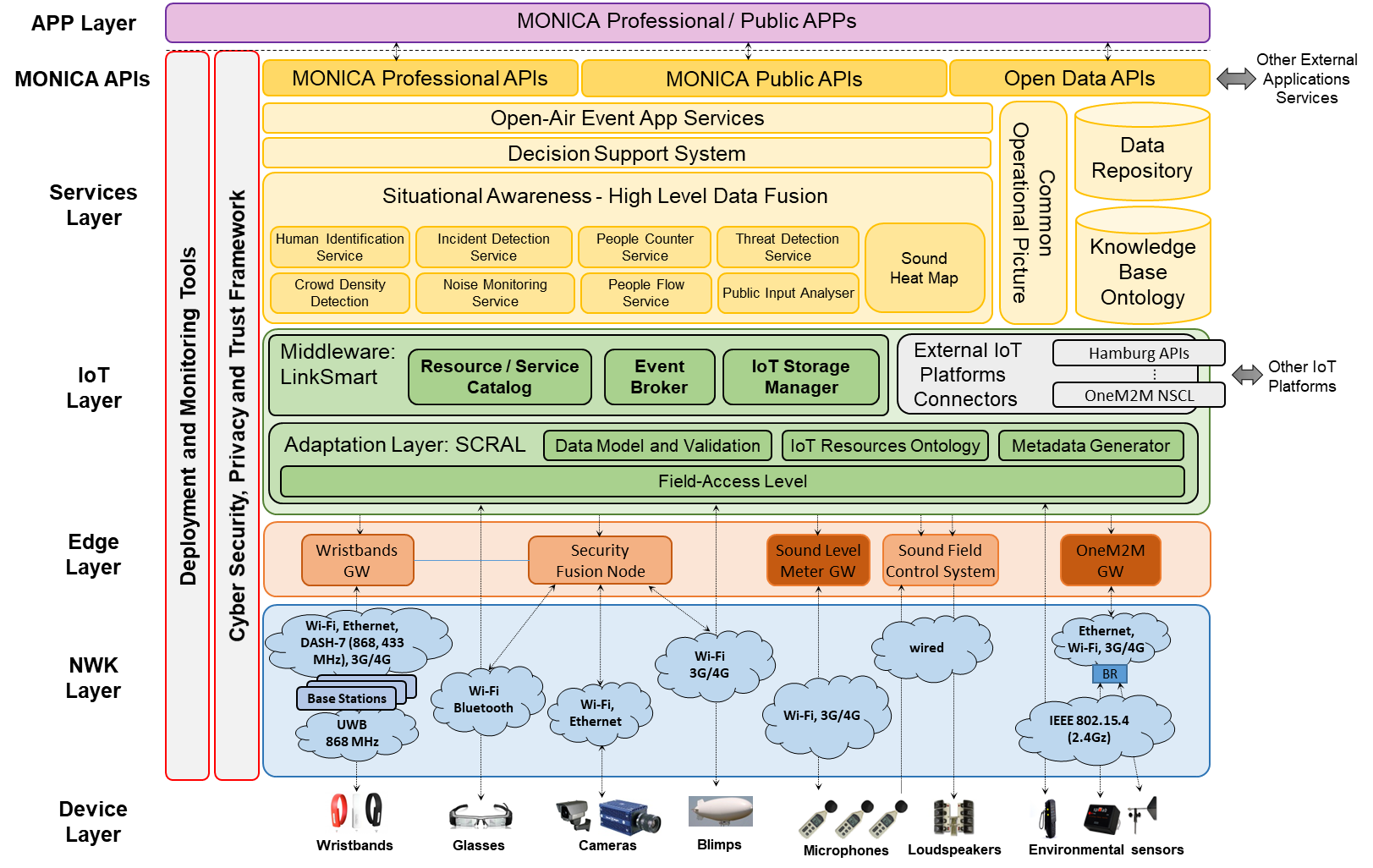
Functional View of the MONICA Platform Architecture.
The architecture comprises the following subsystems, also called layers:
- The Device Layer includes all IoT wearables (g., wristbands and glasses) and IoT sensors, which can be fixed (e.g., sound level meters, loudspeakers, cameras, environmental sensors) or mobile (e.g., wireless sound level meters, cameras installed in a Blimp).
- The Network Layer allows the effective communication between the heterogeneous IoT wearables, IoT devices and the IoT platform modules. This layer is responsible of forwarding data coming from the IoT wearables and IoT sensors as well as of responding to service requests coming from upper layers;
- The Edge Layer includes a set of processing modules (g., the Wearables GW running localization algorithms, Processing Units executing video-based algorithms, the Sound Field Control System (SFCS) for managing the sound quality and noise reduction) that process real-time data directly from the Device Layer. To this purpose, these modules need to be deployed locally in the pilot site to avoid the latency introduced by the upper layers of the platform. Moreover, these modules require an efficient and scalable Network Infrastructure that will be presented in section 5.2.
- The IoT Layer is composed of the following three subcomponents:
- The Adaptation Layer, here represented by the SCRAL, providing technology independent management of physical resources and uniform mapping of data into standard representations that can be easily handled by the upper platform modules;
- The Middleware, here represented by the LinkSmart, which offers storage and directory services for resources registered in the IoT platform;
- The External IoT Platform Connectors, handling the communication with external IoT platforms and the integration of data coming from outside (g. from the Hamburg Smart City platform). In addition, MONICA integrates the OneM2M Network Service Capabilities Layer (NSCL) allowing the platform to expose the IoT data according to the OneM2M standard;
- The Services Layer, where the intelligence of the platform is implemented and specific processing modules are integrated to provide technical solutions compliant with the application requirements. The services modules are combined together with knowledge base components and decision support tools, whose aim is to propose a set of intervention strategies to assist human operators in gathering context-sensitive information and decision making;
- The MONICA APIs Layer, which provides service access points for MONICA application developers and external application developers that want to access MONICA functionalities and information streaming from the platform;
- The Cyber Security and Privacy Framework, enabling trust-based communication, policy management and technical support across all levels of the platform. More specifically, this framework ensures secure data flows and storage, protected information exchange and trusted federation mechanism to facilitate private information sharing;
- The Deployment and Monitoring Tools. These tools belong to a transversal framework able to easy the platform deployment (g. modules belonging to the Device and Network layers) and used for checking the operational status of the devices, networks and overall system. Moreover, these tools are also used for measuring performance metrics and tracing pilot events.
The IoT Layer consists of a middleware and an adaptation layer. The middleware (LinkSmart) offers either storage or directory services for resources registered in the platform. The Adaptation Layer (SCRAL) provides technology independent management of physical resources and uniform mapping of data into standard representations that can be easily handled by platform modules belonging to upper layers.
The platform architecture has been defined based on the HLA developed by the Working Group 3 (WG3) of the AIOTI. The WG3 last updated the HLA in June 2017 (AIOTI HLA, 2017), which at the same time is described using the ISO/IEC/IEEE 42010 standard (ISO/IEC/IEEE 42010, 2011). Related documents to the HLA defined by the WG3 are available at https://aioti.eu/aioti-wg03-reports-on-iot-standards/. The MONICA functional architecture has been mapped to the HLA, which describes functions and interfaces (interactions) within the IoT domain.
Deployment View Architecture
The deployment view describes how the MONICA platform is deployed on the field with concrete IoT platforms (e.g., base stations, cameras, sound level meters, embedded systems running real-time processing algorithms, cloud Infrastructure) and concrete execution environments (e.g., SCRAL, LinkSmart, DSS).
The deployment view focuses on aspects of the system that are important after the system has been tested and is ready to go live. It thus defines the physical environment in which it is intended to run, including:
- required hardware environment (g. processing nodes, network interconnections, etc.);
- technical environment requirements for each node;
- mapping of software elements to the runtime environment;
- third-party software requirements;
- network requirements.
The deployment view needs to document the required deployment environment of the MONICA platform, which depends on the pilot areas and their topology.
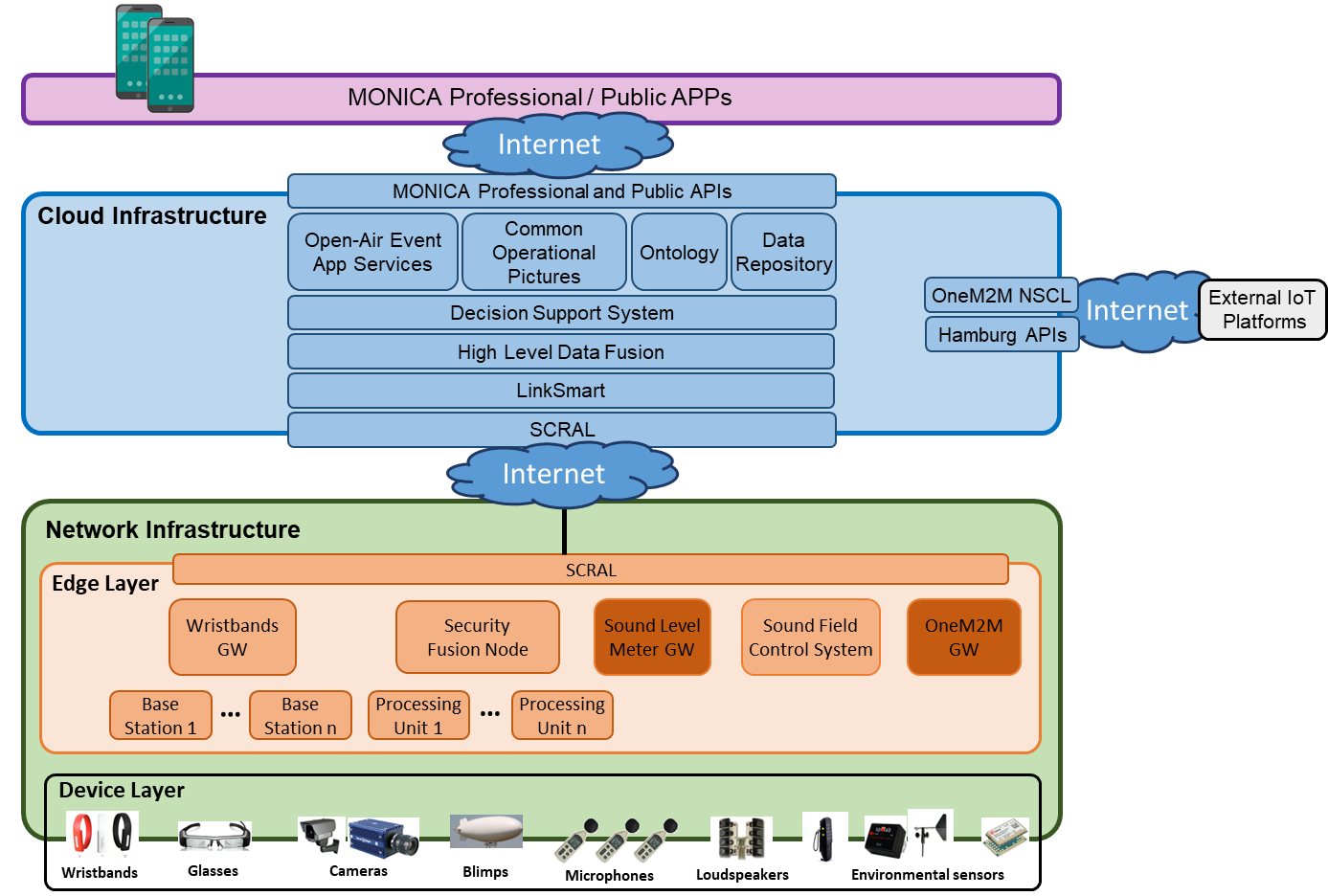
MONICA High-Level Deployment Architecture
Starting from the bottom, firstly, there are the wearables (i.e., wristbands and glasses), which are battery powered, running their intelligence in small and low power microcontrollers; then there are IoT devices, which can be fixed or mobile, such as cameras, blimp and microphones that are equipped their own processing module. Thanks to the Network Infrastructure the IoT devices and wearables communicate their data to the Edge Layer, which includes some modules for further real-time data processing.
All the data processed in the Edge Layer are sent upward to the IoT Platform thanks to the Network Infrastructure. Every module of the Edge Layer hosts an instance of the SCRAL for its integration with the IoT Layer. An exception has been made for the Sound Level Meter GW and the OneM2M GW that are already deployed in their own cloud solutions; in fact, these two modules have been integrated with the IoT Layer by means of the SCRAL deployed in the MONICA cloud.
The MONICA Cloud Infrastructure provided by Atos is hosting the IoT platform (composed of the SCRAL and LinkSmart middleware), the DSS, the Open-Air Event App Services, the Data Repository and the MONICA APIs. Conversely, the High Level Data Fusion module will use a Azure Cloud solution as it reuses some submodules that are based on Azure specific tools.
The High-Level Network Infrastructure is made up of physical hardware, logical software and other peripheral resources of an entire network that provides network communication, connectivity, operations and management of an enterprise network. It provides secure communication paths and services between application service processes and internal or external networks through Intranet or Internet communication via virtual private network (VPN). it offers the same functionality as to any network infrastructure once it is deployed with the aim to provide connectivity and secure communication paths for all IoT wearables and IoT devices.
The MONICA IoT Platform addresses communication issues of scalability, reliability, interoperability, bandwidth/data rate and availability. The different types of IoT connectivity network topologies that can be handled by the MONICA architecture are the following.
- A point-to-point network infrastructure is a simple form of network infrastructure. The network can be established directly between two sensors or a sensor and network node gateway which then connects to the internet.
- A star network infrastructure is where every sensor node is connected to a single central hub which is also known as gateway node. The nodes are able to communicate with each other via the central hub. Thus, all other minor nodes may communicate with all others by receiving from and transmitting to the central hub.
- A mesh/Hybrid network infrastructure is a network infrastructure where many sensor applications require a long range and broad area coverage. A mesh network infrastructure is deployed where all sensors are within the transmission range and can use any path to get to its destination without data loss.
The aim of the communication infrastructure is to provide a broad area network coverage for: (i) the low power low data rate IoT wearables, (ii) the high data rate IoT devices such as IP-cameras and (iii) the low data rate IoT sensors such as the Environmental Sensors.
The IoT wearable communication is ensured by the Wearable Network Infrastructure while the High-Level Network Infrastructure instead provides connectivity for the (i) high rate IoT devices, (ii) the Wearables GW and (iii) the GWs for the low data rate IoT sensors. The general deployment view of the overall network infrastructure topology is provided in the figure below.
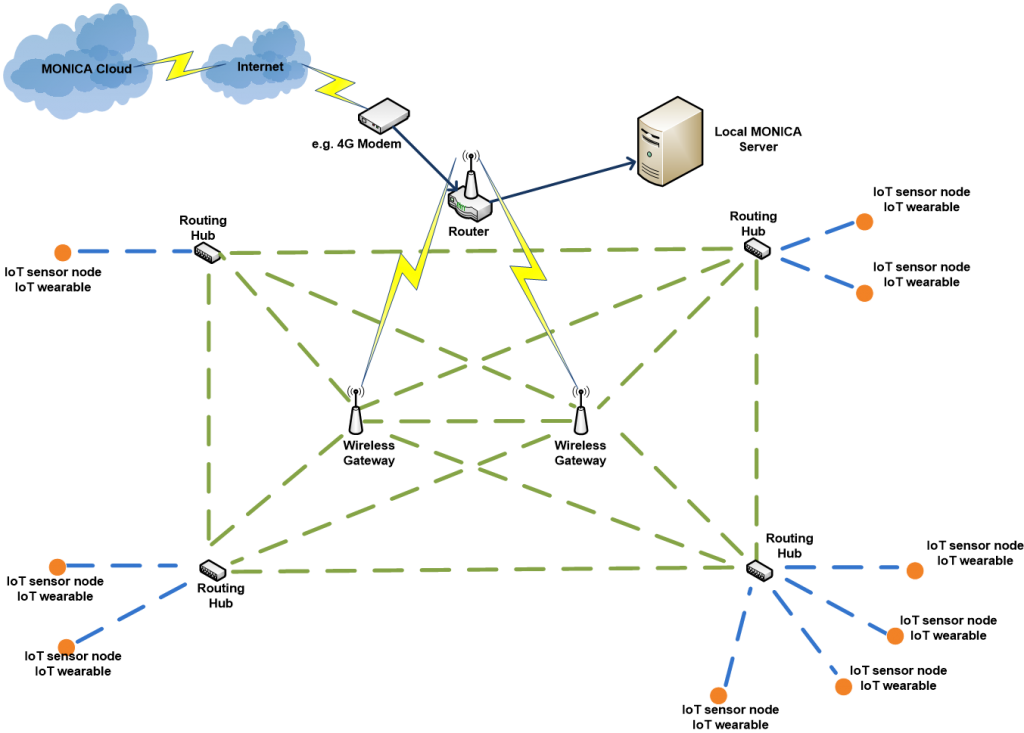
Generic view of the overall Network Infrastructure Deployment
The blue dash lines in the figure show the communication paths between the IoT wearables/IoT sensors and devices with routing capability, named here as Routing Hubs. These Routing Hubs correspond to the processing modules of the Edge Layer (e.g. Wristbands GW, Processing Units, Security Fusion Node). More specifically, the wearable network infrastructure is a low-data rate network using a simple modulation scheme (e.g. based on either 868MHz or UWB) as the wearables are required to be low-cost and battery-powered devices.
The green dash lines show the communication paths between the Routing Hubs and the Wireless Gateways. This part of the network corresponds to the High-Level Network Infrastructure. The Routing Hubs select the best path for the communication of the modules belonging to the Edge Layer modules with the IoT Platform deployed in the MONICA Cloud. The number and locations of the Wireless Gateways strongly depend on the specific pilot. The wireless access points mainly rely on the Wi-Fi standards IEEE 802.11 (a, b and g) with frequency range between 2.4GHz and 5GHz. In addition, 4G modems might be required for the Internet connectivity in case Internet services are not available.
The communication among the different MONICA components is enabled by means of the “Event Broker” sub-component offered by the LinkSmart framework. An Event Broker provides a message bus for efficient asynchronous communication of sensor data streams implementing the publish/subscribe communication pattern. The Message Queue Telemetry Transport (MQTT) protocol is recognized as the de-facto standard for Publish/Subscribe communication in the IoT messaging domain. As a Publish/Subscribe protocol, MQTT provides several features like topic wildcards, different level of quality of service, retained messages, last will and testament, and persistence sessions.
Associated MONICA solutions
The MONICA Platform Architecture and Components supports the following MONICA solutions:
- The MONICA Sound Level Monitoring
- The MONICA Adaptative Sound Field Control solution
- The MONICA Crowd and Capacity Monitoring solution
- The MONICA Crowd Management and Communication solution
- The MONICA Collective Awareness Platform
- The MONICA Visitor Experience App
Implementation
Preparation
The planning and preparation of the MONICA Platform Architecture and Components are done in connection with the planning of the installation of individual solutions. Please consult the applicable partner responsible for the solution.
Deployment
The deployment of the MONICA Platform Architecture and Components are done in connection with the planning of the installation of individual solutions. Please consult the applicable partner responsible for the solution.
Operation
MONICA deployment and monitoring tools are available to ease the platform deployment and may be used for checking the operational status of devices, networks and overall system behaviour. These tools are also used for measuring overall performance metrics.
The operation of the MONICA Platform Architecture and Components are done in connection with the planning of the installation of individual solutions. Please consult the applicable partner responsible for the solution.
Reproducibility means that a MONICA solution (including data sets, software code, etc) can be made available to others for reproducing the same results.
Software reproducibility tools of the MONICA Platform are made available by the MONICA Development Toolbox.The MONICA Development Toolbox consists of a set of platform components and tools as well as a set of tutorials and guidelines which allows developers to rapidly reproduce specific use cases and also develop new applications on top of the MONICA Platform
Given a specific use case, the involved components are integrated and connected according to the MONICA Platform Architecture specification. The toolbox can then be used to integrate various resources into the IoT platform, while hiding the complexity of the underlaying communication with IoT devices.
In particular, data from the Device Layer can be sent to the IoT Platform by a tool called Replayer, which replays real observations stored in databases from e.g. pilot events. Alternatively, some software emulators can be used like the Wristband Emulator that generates wristband positions and sends the wristband messages to the IoT platform. Other MONICA components and tools made available by the Toolbox are: the High Level Data Fusion Anomaly Detection (HLDF) tool, the Decision Support System (DSS), and the tools related to the MONICA Common Operational Picture (COP), which allow the user to reproduce the COP and test the COP user interface, the COP APIs and the COP databases used for storing the state of the COP.
For the specific MONICA solutions, the following tools are available in the MONICA Development Toolbox:
The MONICA Architecture and Components:
The MONICA Development Toolbox:
MONICA Crowd and Capacity Monitoring solution:The MONICA Crowd and Capacity Monitoring Toolbox:
https://github.com/MONICA-Project/DockerGlobalWristbandSimulation
The Replayer Tool:
https://github.com/MONICA-Project/observation-replayer
The MONICA Wristband Emulator:
The MONICA Crowd Management and Communication solution:
The MONICA Staff Management Toolbox:
Technical regulations
The following IoT “horizontal standards” have been adopted in the MONICA IoT Platform:
Architecture
- ISO/IEC/IEEE 42010:2011
Device/NWK Layer
- Bluetooth BLE
- Wi-Fi – IEEE 802.11
- UWB – IEEE 802.15.4a
- ETSI EN 302 065-2 V2.1.1 for staff wristbands (UWB)
- ETSI EN 300 220-2 V3.1.1 for crowd wristbands (868MHz)
- IETF 6LoWPAN / IETF ROLL / IETF CoAP
- OASIS MQTT
Ontology
- ETSI SAREF
Security
- IETF Oauth / OASIS XACML
IoT Platforms
- oneM2M
Data format
- OGC SensorThings API
Other standards and norms have been adapted in the individual MONICA solutions.
Other local/national regulations
There are no specific national regulations related to the MONICA architecture itself. The regulations are related to the individual solutions running on the platform. Please consult the solutions for further details.
Ethics
There are no specific ethical considerations related to the MONICA architecture itself. The considerations are related to the individual solutions running on the platform. Please consult the solutions for further details.
No lessons learned has been collected for the MONICA Platform Architecture and Components.
Replication
Business Models
No business models have been created for the MONICA Architecture and Components itself. The MONICA solutions are the subjects of exploitation and the business models have been created only for the solutions.
Revenue models
The following information is solely provided as a guide to the expected business conditions that the MONICA Components might be provided at. Please contact the responsible partner for further, up-to-date details.
| Components | Type | Anticipated revenue model |
|---|---|---|
| MONICA Cloud Infrastructure | Cloud service | Can be replicated as a customised solution for other IoT applications with closed loop feedback functionalities. The Platform Core Enabler is available as a Platform as a Service (PaaS) solution, extended by integration services of the appropriated auxiliary enabler(s). Planning service is always required as an additional one-off charge. |
| MONICA Nwrwork Infrastructure | Network service | Can be replicated as a customised solution for other IoT applications with closed loop feedback functionalities. |
| MONICA Development Tool Box | Open Source Software | PThe MONICA Development Toolbox contains software developer tools, Generic enablers and third-party tools. |
During the project period 2017 – 2020, the MONICA Architecture and Components infrastructure was deployed and tested in real-life situations in all the pilots.
| MONICA demonstration events | |
|---|---|
Ville de Lyon
|
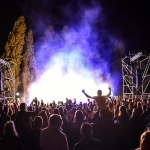 Nuits Sonéres 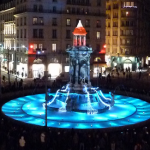 Fête des Lumières |
| Città di Torino |
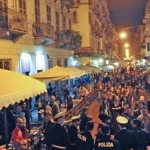 San Salvario 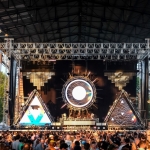 Kappa FuturFestival |
| Stadt Bonn |
 Puetzchens Markt  Rhein-in-Flammen |
| Tivoli, Copenhagen |
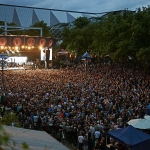 Tivoli Fredagsrock |
Stadt Hamburg
|
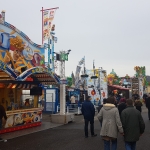 SpringDOM |
| Leeds Cricket & Rugby |
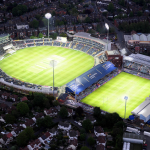 Headingly Stadium 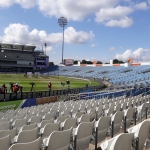 Leeds Cricket |
For more information, please see the contact list below
Replicators
No replication demonstrations were undertaken.
The following partners are responsible for various components of the MONICA Architecture and Components:
| Solution | Responsible | Acronym | Details |
|---|---|---|---|
| MONICA Cloud Infrastructure | Atos | ATOS | ATOS can replicate the cloud infrastructure in the appropriate structure and provide the integration of the MONICA components (acting as the system integrator) and offer the best structure (SW and HW as the service or purchase of the equipment – contemporary installations. |
| MONICA Network Infrastructure | LINKS | LINKS | LINKS can replicate some of the MONICA IoT network infrastructure components. |
| MONICA Cloud and Network Infrastructure | CNet Svenska AB | CNET | CNET can replicate some of the MONICA Cloud and IoT network infrastructure components. |
| MONICA Development Tool Box | CNet Svenska AB | CNET | CNET can provide support for using the MONICA Development Tool Box |
